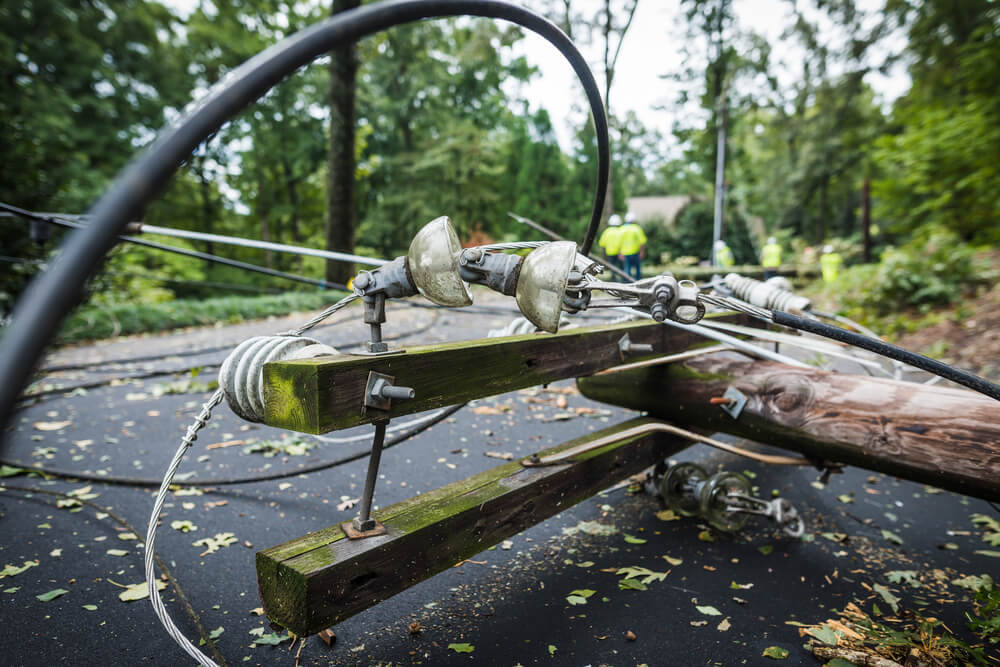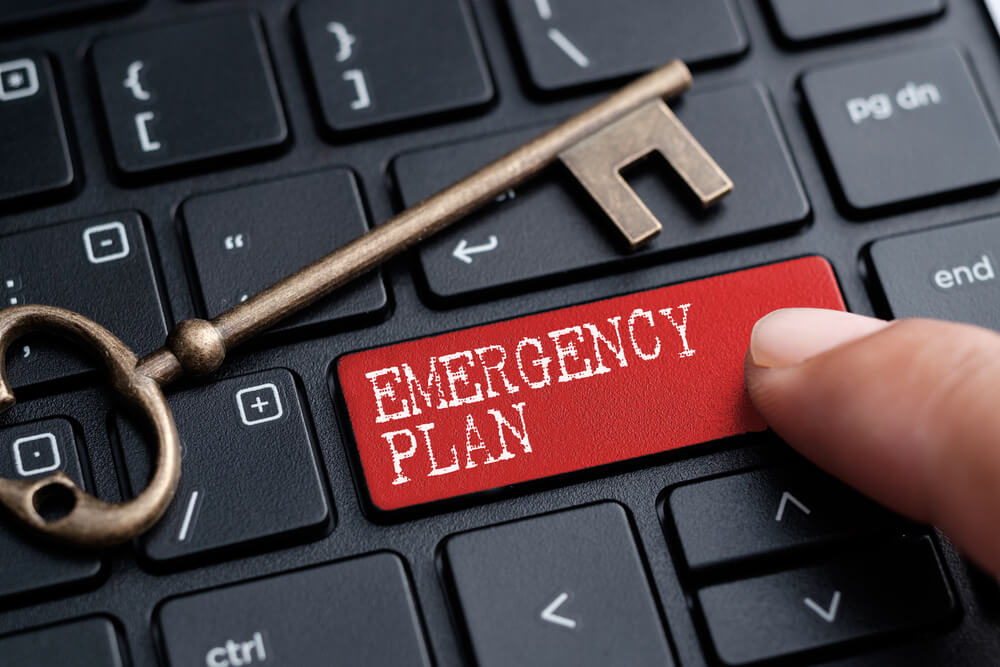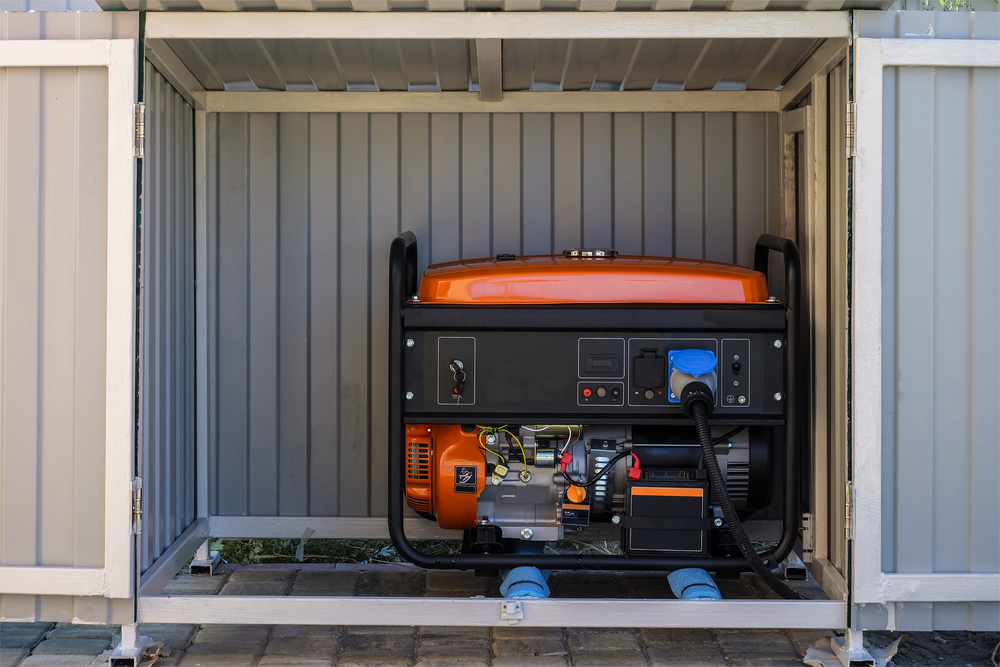Disclosure: This post may contain affiliate links. This means that at no cost to you, we may earn a small commission for qualifying purchases.
Last Updated on April 6, 2024
It can happen for a variety of reasons: A powerful storm, or too much snow, perhaps. Even a squirrel can cause days-long power outages.

You never know when the power’s going to go out. But when it does, you’re going to wish you were more prepared. To avoid uncomfortable — or even dangerous — situations during a power outage, your best defense is good preparation.
Contents
Power Outage Tips – How To Stay Prepared
1. Create an Emergency Plan

Imagine what it would be like to actually be in the middle of a power outage. What would you eat? How would you keep the kids entertained? How would you keep perishable food cool?
These are the questions you should be able to answer before the power goes out. Be sure to write down all the cellphone numbers of your family members and have a spare communication method in case your smartphones die, such as with a flip phone that accepts a SIM card.
Divide tasks between you and your family members, such as who will gather flashlights, who will start up the generator, who will pull perishable food out of the fridge to prepare for the next meal, etc. Be sure to create a plan in case the power outage lasts for a week or more.
2. Stock Up
Some power outages last for a few hours. Others last for days, meaning everyone in your city will scramble to the grocery store to buy food, water, batteries, and other necessities.
You don’t want to be caught in the storm-rush, or worse — find necessary supplies gone in the middle of it. When you go grocery shopping now, while there’s still power on the grid, buy an extra item that could go to your power outage supplies, such as one pack of batteries or a can of food. Maintain those edibles that do not require refrigeration.
If you live in an area vulnerable to hurricanes, tornadoes, and floods, you’ll find it most time-effective to buy all power outage supplies during one weekend to get it over with.
No matter when you decide to buy supplies, be sure you have enough of them in case the power were to go out tomorrow.
Some necessary supply kit to buy include:
- Gallons of water
- Canned, dried, or non-perishable food
- Can openers
- Flashlights
- Batteries for flashlights
- Medication
- Hand sanitizer and baby wipes to conserve water while still maintaining hygiene.
- Candles
- Lighters
- First aid kit
- A generator
- A mini radio to receive weather forecasts and other news.
- Books and board games for entertainment
3. Eat Strategically
Microwaves, ovens, and stovetops will be out of the equation. You’ll have to learn how to start a fire outdoors or in your fireplace if you want hot food. Stock up on fuel and wood to burn outdoors, or cooking fuel for indoor use if the outdoors are too wet for a fire.
Throw away any food that has been exposed to temperatures 40 degrees or that has an unusual odor, color or texture.
According to the Red Cross, a refrigerator and freezer can keep food cold for about four hours. A full freezer will keep cold for 48 hours, and a half-full freezer is chilly for 24 hours.
Be sure to eat whatever food is in the fridge first, making sure to keep the refrigerator and freezer doors closed as much as possible. Then move onto the freezer, going through items until the fridge is empty.
Use a thermometer in the refrigerator and freezer so that you can know the temperature when the power is restored in the power lines.
Sandwiches are easy meals to sustain a family during a power outage. Bread stores perfectly well in a freezer, and it can be pulled out whenever an emergency arises (though make sure to change out your bread every few months). Then, use peanut butter or tuna to feed your family high-calorie meals which will work as emergency supplies.
Once the perishables are gone, move onto your non-perishable stock. Be sure to get variety in the foods so that it’s not all beans and corn to ensure no one gets a vitamin deficiency.
4. Get a Generator

A high-quality standby generator allows you to avoid disrupting your quality of life during power outages. Once you flip the generator on, you can get electricity running back to your house and resume operations like normal.
While worth it to maintain maximum energy input during a power outage, standby generators are expensive and might not be the most affordable for middle-class families.
Portable generators are the next best bet for returning power to your home. You can place them outside the window of any room of the house, whether it’s charging phones or tablets, cooking dinner on the hot stove, or powering up a television.
Make sure you keep important devices charged and keep the generator’s gas tank full.
Life-saving medical devices, such as breathing machines, oxygen machines, power wheelchairs, and home dialysis equipment, all require electricity to function, and could threaten the lives of those who use them should their machines not work. A generator is an especially crucial investment if you have a family member who’s life is in danger should they not have electricity.
However, just be sure to use a generator indoors for only about 10-15 minutes, as anything longer could put you and your family at risk for carbon monoxide poisoning. Make sure you install carbon monoxide detectors with battery backup in central locations on every level of your home.
Top Tips for Powering Through a Power Outage

- Practice generator safety, especially when using a generator indoors.
- Make sure you and your family only eat safe foods. If meat, poultry, fish, or milk has been sitting at room temperature for more than two hours, it would be best to throw it away. Even if your food does not look or taste spoiled, it could still accumulate harmful bacteria that could lead to illness — which is not something you want during a power outage.
- Disconnect appliances, such as washing machines, stoves, and televisions, from the outlet during a power outage. Power surges upon energy returns could harm those devices.
- Store ice in your freezer in case the power outage lasts more than a day. Put the ice in a freezer to keep food cold after the freezer stops maintaining insulation. A full freezer will keep the temperature for about 48 hours.
- Avoid driving in your town when the city doesn’t have power. Traffic lights won’t work, increasing the odds of an accident.
- If you know you’ll lose power, such as through hurricane warnings or scheduled power outages, fill up your car with gasoline and keep extra fuel in the shed for generators.
Also Read: